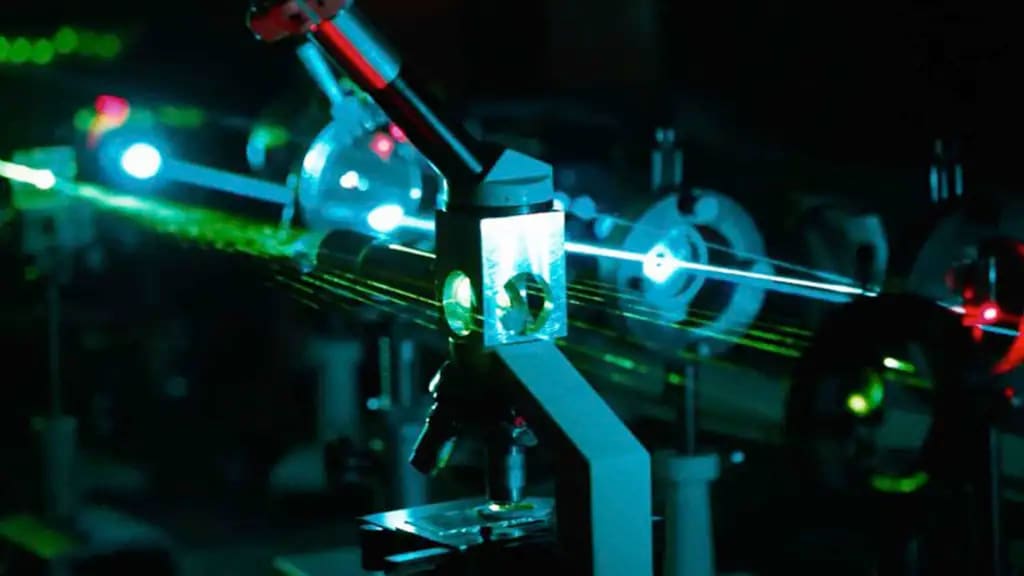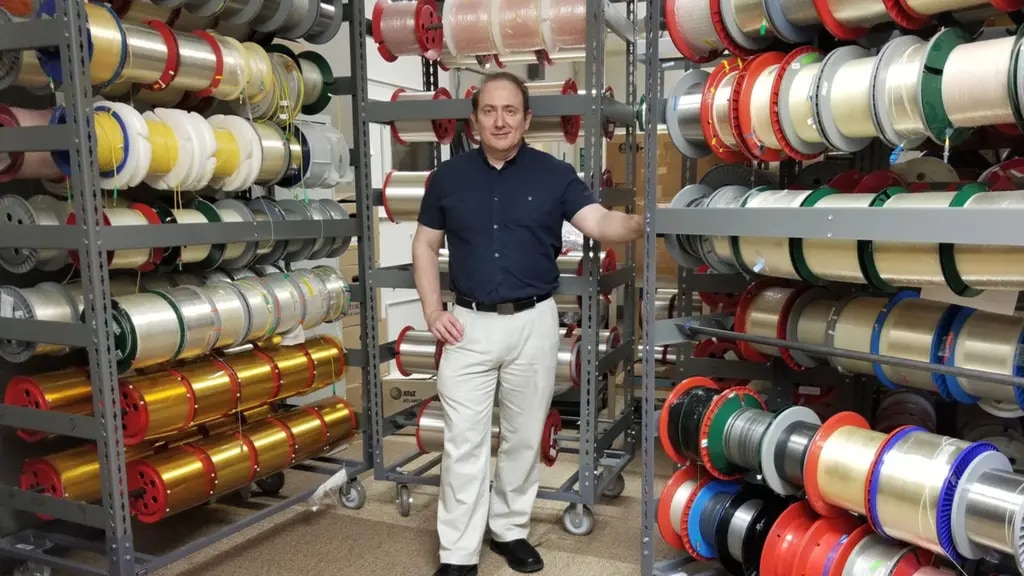Connecting the far reaches of the solar system with low-power quantum detection

Quantum mechanics has opened the door to amazing new innovations in multiple technological fields. Quantum computers will one day answer problems unsolvable by classical computers. Quantum sensors will detect new phenomena to gain a better understanding of the natural world. And quantum security will protect our most sensitive data behind the immutable laws of physics.
Quantum technologies, however, won’t just change how we compute, sense and secure information. The emerging field of quantum networking will change the way we connect our world — and maybe even worlds beyond our own.
Nokia Bell Labs’ work in quantum networking is helping to redefine the fundamentals of communication. By applying quantum mechanics to optical networking, Bell Labs researcher René-Jean Essiambre is pushing the upper limit of the amount of information that can be carried by a single photon of light.
This breakthrough has important implications for an optical industry that for decades has been focused on speed and capacity. By maximizing the amount of data packed into every photon, optical networks can transmit at extremely low power. These low-power quantum networks could be used to create highly secure communications channels, as well as pave the way for to more sustainable fiber-optic systems. They could lead to much improved satellite communications. And they could provide high-capacity connections into deep space, linking us to scientific missions on other planets and the far edges of our solar system.
Counting photons
Quantum networking research covers many areas, and researchers often mean different things when they use the term “quantum network.” The most common meaning is a network that carries information in a quantum state. These networks will be key to creating the quantum internet, which will interconnect quantum computers, quantum sensors and other quantum devices. These types of networks are also used in security applications to prevent electronic eavesdropping.
But Essiambre is applying quantum technologies to networks in a different sense. Rather than send quantum information over the network, Essiambre is sending classical information — in other words, the same way today’s conventional optical networks transmit data. The quantum aspect comes into play on the receiving end of the network. There, Essiambre is using quantum technologies known as photon detectors to identify individual photons, the elementary particles that make up any optical transmission.

Essiambre has developed an optical system that uses photon detection to minimize the energy required to send information over a network. This maximizes the amount of information that can be extracted from each photon transmitted in the optical network, providing key advantages over current approaches. First, Essiambre’s network can operate at extremely low power. Second, the network can receive data over tremendous distances. Finally, the network can maximize the amount of information sent over a single photon.
“The goal is to transmit and detect the most information with the fewest number of photons,” Essiambre said. “We have been able to demonstrate a transmission of 14 bits per photon. To our knowledge, this is the lowest energy-per-bit communication system ever demonstrated at an optical communication wavelength.”
New frontiers in communications
This low-power quantum detection technology could have numerous applications, but one of its most compelling uses could be in space-based communications. Free-space optics combined with quantum detection could be utilized to create high-bandwidth links between the Earth and other planets and probes traveling to the edge of the solar system.
Today, deep-space communications use microwave connections, but microwaves have severe limitations. The further away from the Earth a transmission originates, the more information is lost in transit. So, signals being sent from a Mars mission or from a probe venturing to the outer planets would have to transmit at extremely high power — or send very little data — in order to maintain contact with Earth.
Transmitting via optical laser, however, would allow a deep-space network to focus a narrower beam of photons towards Earth than when using microwaves. This narrow beam would be 100 million times more intense than a microwave transmission, a tremendous advantage for laser communication.
The high directionality of lasers enables the transmission of large amounts of information at very low power from, say, a lunar or Martian base. Furthermore, lasers would allow for multiple simultaneous links, supporting a growing infrastructure and human presence on other planets. This is in contrast with microwaves beams that quickly become so wide at interplanetary distances that they could not support more than a few simultaneous communication channels.
Low-power quantum detection could be applied much closer to home, linking satellites in orbit to the Earth surface. The technology could detect photons from a satellite laser in harsh conditions such as in the presence of heavy mist, clouds or major storms.
Essiambre’s research could also be used to improve the security of communications channels from or between satellites or between two points on Earth within line of sight. A sufficiently low energy, tightly focused optical laser would be difficult to intercept and decode.
Unleashing the potential of quantum networks
Essiambre’s work in low-energy quantum detection is just one of Nokia Bell Labs’ research projects in the field of quantum networking. Bell Labs researchers are investigating possibilities for a future quantum internet and developing technologies like quantum repeaters that would help overcome current limitations in fiber-optic quantum communications.
Just as Bell Labs defined the limits of classical communications with the development of Information Theory in the 1940s, its mathematicians are now exploring the limits of quantum communications with their work on Quantum Information Theory. Nokia Bell Labs is even researching how photons could be used as the elementary components of quantum computing, creating what would essentially be a light-based computer.
Essiambre would be the first to admit that his use of quantum mechanics in his research isn’t the most common approach to quantum networking, but for Essiambre, quantum technologies are just a means to an end.

“I’m not using quantum technology for the sake of doing quantum,” Essiambre said. “My philosophy is that we are trying to find the best possible way to communicate. This means inventing new ways to communicate by using the best possible technologies at our disposal, whether they are quantum or not.”
From Essiambre’s point of view, quantum detection is a tool for maximizing the efficiency of optical networks, which could lead not only to new optical communications applications but also to greener, less power-hungry networks in the future. This would be of profound significance to an optical communications industry that for decades has single-mindedly focused on boosting raw capacity.
If you were to think of the network as a superhighway full of trucks, Essiambre isn’t increasing the number of lanes, nor is he packing more trucks into each lane. Rather, he’s increasing the amount of goods each truck can carry without increasing their fuel consumption. This is a fundamentally different way of thinking about networking.
